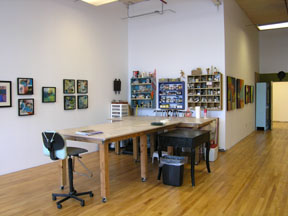Blogger's Note: In this season of religious celebration for many, I thought I would offer a modest shout-out to the original religion. Apologies to any who are offended. You can stop reading here if you think you were first in line.
---------------------------------------------------------------------------------
While I was walking over to view the Chakaia Booker sculptures at the DeCordova Museum, I spotted this lovely piece nearby.
This is Manna , 2007, Bronze, 6’7’’x 5’x 5’,by Tom Chapin.
This striking piece was so evocative of ancient cultures and yet looked entirely contemporary. I just loved it. The form and the beautiful color that came from weathering appealed to me so much.
Here she is in the sculptor's studio before being exposed to the elements.
The DeCordova website has this to say about Manna:
Although Chapin typically carves from stones as diverse as marble, limestone, and jade, Manna is made in bronze. Reminiscent of Neolithic fertility statuettes like the Venus of Willendorf, Manna makes reference to the duality of base desires and the richness of life sustaining gifts. Chapin uses five sets of five orbs to create this five sided structure as a mathematical reference to pentagonal symmetry. The plump and primal figure reflects the artist’s interest in both the complexity and beneficence of the universe.
Sculptor Tom Chapin, born 1954, lives and works in Phippsburg, Maine.
The work on Tom Chapin's website is just beautiful. I can see the influence of so many ancient cultures in his work, but it has an organic simplicity and elegance that is all his own.
Manna's influences
By this I mean that I assume these are some of the influences. They are actually what I was reminded of when I saw Manna.
"Venus" of Willendorf, found in 1908 by the archaeologist Josef Szombathy above the Danube river near the town of Willendorf in Austria. The statue is only a little over 4" tall and is carved from a type of limestone not found in that area. It is currently dated to around 24,000-22,000 BCE. (All these so-called fertility figures were called "Venus" after the Roman goddess of beauty.)
Back in the 1980s I was heavily influenced by my studies of ancient goddess figures, so of course I saw in Manna not only the Venus of Willendorf, but the many-breasted Artemis of Ephesus.
Apparently worship of Artemis was either a very popular religion or the religion was fortunate in having many representations survive as there are many recovered statues similar to this. I saw one in the Vatican Museum and another at the Archeological Museum in Naples. (I like the Naples one because of the black hands and face - see below.)
I really had an LOL moment when I read this description of the breast-shaped objects protruding from her chest: "One of Artemis' characteristics is that she protects fertility. This may be symbolized by the spherical objects that cover the lower part of her chest, but the common assumption that they are female breasts is incorrect. They probably represent the testicles of a bull, although they may also be gourds, which were known in Asia as fertility symbols for centuries." (www.livius.org/ei-er/ephesus/ephesus_artemis.html)
Come on! When was the last time that bulls' testicles protruded from a woman's chest? Perhaps it would be more appropriate to say that the priests of Artemis wore bulls' testicles or gourds to represent breasts, and that gourds were considered fertility symbols (just as other melons are) because they represent breasts!
Well, anyway, Manna also reminded of one of my original sculpture faves, Gaston Lachaise, who created buxom statues as inspired by his full-figured wife, Isabel.
Standing Woman, 1932, bronze, 88 1/2"H, Gaston Lachaise. No doubt you have seen this work at MoMA. I always thought it was so regal and imposing. She is truly a goddess.
Here are some other Lachaise figures:
Torso of Elevation, 1912-27, bronze, 48" high.
Standing Nude, 1921, bronze, 11 3/4" high.
Torso, 1928, 9 1/2" high.
In this last image you can see that Lachaise came very near to making his own Venus of Willendorf. Of course he suffered for his daring work and was condemned as vulgar.
Which brings us back full circle to Manna. Tom Chapin referred in his statement on Manna to the "duality of base desires and the richness of life sustaining gifts." I think that in depicting the sexual characteristics of women, this duality is inescapable. Through his indirect depiction or allusion and by invoking mathematical perfection, Tom Chapin avoids getting caught up in this controversy and brings his work to a state of iconic contemplation of the female.




















5 comments:
wonderful glimpse - I spent time with each and every image on his site.impossible not to. beats chocolate rabbits and marshmellow chicks hand down. thanks.
Glad you enjoyed it, Deb.
Thanks for this splendid post, Nancy. I remember the first time I saw the Artemis aka Diana of Ephesis aka Ma Rhea (Maria?!)in the Museo Archeologico in Naples. I turned the corner and there she was, standing among many other statues, all pink alabaster and brongs head and hands. She really did take my breath away. She's life size and incredibly beautiful. The bull testicle story is total bull--a good example of how matriarchial religions were subsumed. Your hypothesis is much more likely. (And, I ask you, why is it that even now the catholic priests wear dresses?)
When I returned to the museum a few years ago, she had been given a more prominent place--with a little motre space around her.
As Artemis, she's queen of the animals (i.e. life), and her alabaster gown is carved with species of all kinds. So beautiful.
Thanks for your great comment, Joanne. The Artemis/Diana/Maria statue is a beauty and her multi-breasted splendor portrays the abundance of nurture and life with the Great Mother.
Sorry about my typos. Much as I try, thet spell check app seems to b turned off in my brain.
Post a Comment